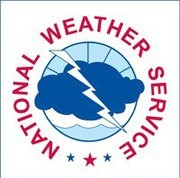Predictability of High Impact Weather during the Cool Season over the Eastern U.S: From Model Assessment to the Role of the Forecaster
PI: Dr. Brian A. Colle Co-P.I.: Dr. Edmund Kar-Man Chang
A recent National Academies report sponsored by the National Weather Service on characterizing and communicating atmospheric uncertainty (Completing the Forecast: Characterizing and Communicating Uncertainty for Better Decisions using Weather and Climate Forecasts) makes clear the necessity of moving towards probabilistic prediction driven by ensemble forecasts. Forecasters have increasing ensemble guidance available, but ensemble data is often not used effectively since: (1) ensembles have not been comprehensively verified, (2) ensemble underdispersion and biases limit ensemble skill, (3) forecasters lack tools to understand the origin of ensemble spread and errors in realtime, and (4) forecasters have few ways to communicate uncertainty in their forecast products.
Using verification, data assimilation, and multi-model ensemble approaches, this project will evaluate and improve operational ensembles for high impact weather and develop probabilistic tools for the forecaster. The project will focus on the predictability of extratropical cyclones (and associated Rossby wave packets) over the eastern U.S. and adjacent offshore waters for the days 1-7 predictions and select mesoscale phenomena associated with cyclones (1-2 day predictions), with particular emphasis on precipitation bands. Substantial interactions are expected with several NWS forecast offices, the Environmental Modeling Center (EMC) of NCEP, the Hydrometeorological Prediction Center (HPC) of NCEP, Ocean Prediction Center (OPC) of NCEP, and the NOAA Earth System Research Lab (NOAA-ESRL). NWS forecasters will play an integral part in this project, both in using the tools developed and by thoroughly assessing their value in collaboration with Stony Brook University (SBU).
The following tasks will be completed. The first task will be to verify extratropical cyclones from days 1-7 over the eastern U.S. and western Atlantic using a multi-model ensemble dataset, and compare the results with other regions. It has been hypothesized that Rossby wave packets associated with these cyclones can be forecast in the medium range, so a quantitative assessment will be completed. Small and large forecast errors will be composited to better understand their respective large-scale flow patterns, with particular emphasis on the large-error (drop-out) events. The second task will be to use the NCEP ensemble sensitivity analysis for the Winter Reconnaissance program and TIGGE data to investigate the sources and growth of errors from the Pacific to the western Atlantic. New tools will be developed to help forecasters visualize the downstream propagation of errors, and anticipate their impact on the forecast. The third task will be to explore the predictability of select mesoscale phenomena such as precipitation bands within the comma head of extratropical cyclones. First, the predictability of these phenomena will be linked to the large-scale setup in the medium range ensemble forecasts. Second, we will explore the role of initial condition and moist processes on band predictability in the short-term using the SBU ensemble forecast system, NCEPís SREF system, and an ensemble Kalman filter (ENKF) sensitivity analysis on select cases. The final task will be forecaster training and assessment through site visits, go-to meeting exchanges, email listserves, a project web page with links to experimental data, event reviews, bi-monthly conference calls, annual workshops, and forecaster analysis of specific cases and software tools for ensembles.



